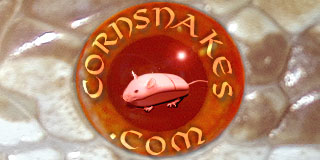I deliberated for a while as to where to post this (here or in husbandry) and decided on here (obviously) as this is a partial "vent" thread.
Personally I am frustrated that there is allot of "advice" to totally avoid the stick on type thermometers as they don't work, or are highly inaccurate. :twoguns:
This lead me to do a little experiment. From a sample of 6 of these "stick on" thermometers I concluded they had an accuracy of +/- 2 Deg. F. Admittedly this is a very small sample group and is by no means a conclusive study, however, I feel that it is enough grounds to somewhat disclaim the statements that "they don't work".
Stick on thermometers are a tool, as with any tool they have a function. Just the same as you would not use an axe to cut glass, stick on thermometers do not measure substrate temperature, nor are they intended to.
The safest husbandry practise is to measure and monitor the hottest part of any enclosure (vivarium or tub) that your animal can come in contact with.
For those people that use a UTH (Under Tank Heater) the temperature is most reliably measured on the enclosure surface, under the bedding of choice as snakes will "burrow" and come in contact with the heat at this point. To measure and monitor this, it is recommended that a thermometer with a remote probe is used.
Having said that, there are allot of people that use heat or spot lamps. Unless you lost your mind and mounted this lamp under the viv, burying a thermometer probe in substrate is pointless, keeping in mind you want to monitor the hottest area.
So what is the point of this thread?
Simple, heat lamps provide heat through ambient thermal flow, stick on thermometers measure ambient temperature and must be positioned in the enclosure accordingly (right tool, right job). While it may be potentially hazardous to rely on these solely, they definitely have their place in ensuring a healthy environment when used in conjunction with a separate thermometer, just the same as there are potential hazards with relying on just one thermometer of any type.
In summary; there is a benefit to using a stick on thermometer, placed close to the substrate and adjacent structure when using a heat lamp as well as monitoring ambient temperature of the enclosure.
Please also note that this is just my opinion and in no way is it my intention to single anyone out or offend anyone at all. :wavey:
Personally I am frustrated that there is allot of "advice" to totally avoid the stick on type thermometers as they don't work, or are highly inaccurate. :twoguns:
This lead me to do a little experiment. From a sample of 6 of these "stick on" thermometers I concluded they had an accuracy of +/- 2 Deg. F. Admittedly this is a very small sample group and is by no means a conclusive study, however, I feel that it is enough grounds to somewhat disclaim the statements that "they don't work".
Stick on thermometers are a tool, as with any tool they have a function. Just the same as you would not use an axe to cut glass, stick on thermometers do not measure substrate temperature, nor are they intended to.
The safest husbandry practise is to measure and monitor the hottest part of any enclosure (vivarium or tub) that your animal can come in contact with.
For those people that use a UTH (Under Tank Heater) the temperature is most reliably measured on the enclosure surface, under the bedding of choice as snakes will "burrow" and come in contact with the heat at this point. To measure and monitor this, it is recommended that a thermometer with a remote probe is used.
Having said that, there are allot of people that use heat or spot lamps. Unless you lost your mind and mounted this lamp under the viv, burying a thermometer probe in substrate is pointless, keeping in mind you want to monitor the hottest area.
So what is the point of this thread?
Simple, heat lamps provide heat through ambient thermal flow, stick on thermometers measure ambient temperature and must be positioned in the enclosure accordingly (right tool, right job). While it may be potentially hazardous to rely on these solely, they definitely have their place in ensuring a healthy environment when used in conjunction with a separate thermometer, just the same as there are potential hazards with relying on just one thermometer of any type.
In summary; there is a benefit to using a stick on thermometer, placed close to the substrate and adjacent structure when using a heat lamp as well as monitoring ambient temperature of the enclosure.
Please also note that this is just my opinion and in no way is it my intention to single anyone out or offend anyone at all. :wavey:
